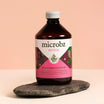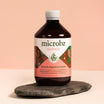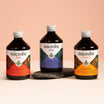Bayberry
Myrica cerifera

Family: Myricaceae
Which probiotic is it in?: Bayberry is a key herb in Breathe
Habit and cultivation: Found in the coastal regions of Eastern and Southern USA, it grows in the thickets near swamps, marshland and the sandy belt along the coast. Grown from seed or cuttings and harvested in autumn.
Actions (known for): Carminative, galactogogue, anti-spasmodic, expectorant, aromatic, diuretic, oestrogenic.
History of Bayberry
Parts used from the Bayberry
Root bark.
Constituents (bio available chemicals):
Phenolic acids including cynarin (hepatoprotective qualities). Also contains alkaloids, coumarins, pseudotannins, polyacetylenes and cynarase a curdling agent.
Nutritional constituents:
Minerals: Iodine.
Indications:
Hepatoprotective properties.
Dosage:
Dry leaf: 1-4g daily.




































